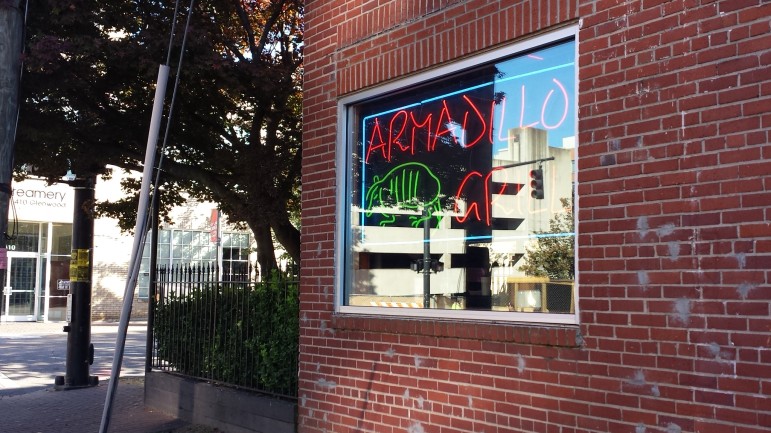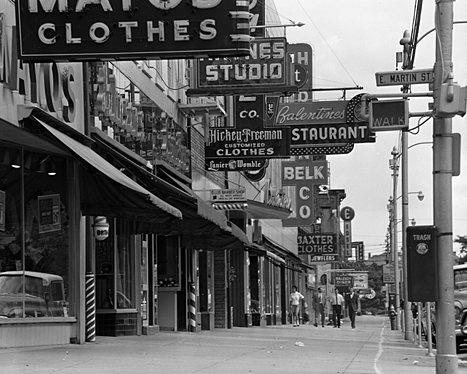A task force put together in June to evaluate the city’s existing sign ordinance regulations made their recommendations to City Council last week, which included increasing the amount of signage allowed in a business’s window.

Staff / Raleigh Public Record
An interior sign just off Glenwood Avenue.
The task force, which has been meeting weekly with city staff, told councilors they recommended increasing the allowed window space from 30 to 50 percent.
Jennifer Martin, who chaired the task force, also told councilors they should increase the number of colors allowed, which is currently limited three plus black & white, to seven plus black & white.
Recommendations were also made to create limits on allowed vehicular signage, which would be any sign attached to a vehicle or an accessory to a vehicle, such as a trailer. It will not apply to food trucks, fleet vehicles, maintenance vehicles or rental vehicles.
Vehicular signage will be permitted as a general use in a number of districts, including office and institution, buffer commercial, shopping center, neighborhood business zone, thoroughfare and industrial one and two.
The task force also noted that string lighting should be prohibited within 100 feet of a residential district, with an exception between November and January.
Overly Restrictive
Although the task force recommended regulations less restrictive than those already on the books, many business owners are still unsatisfied with the results.
Richard Gardner, the owner of ComedyWorx on Peace Street, said he could lose customers if he was not allowed to use his window as signage.
“If ComedyWorx loses one sale per show, that’s an $8,000 annual loss, it’s a hidden tax.” Gardner said.
Gardner cited several studies that found large window signage was not detrimental to public safety — be it motorist distraction or reduced visibility — and said allowing window signage was incredibly beneficial.
“Signs are the most effective and least expensive way to advertise,” Gardner said.
Gardner presented councilors with a petition signed by 300 people opposing restrictions on window signage.
Councilor John Odom agreed with some of Gardner’s sentiments, noting that a regulation on the size of window signage was equivalent to “going inside a business.”
“It’s like going into your home,” Odom said.
No Past Harm
Councilman Thomas Crowder noted that similar arguments had been made when Raleigh first began implementing more restrictive sign ordinances years ago, and that instead of hurting business, “the opposite has happened.”
Developer Bill Mullins, a member of the task force, said when the initial regulations were

Courtesy North Carolina Archives
Fayetteville Street, Raleigh July 7 1957, a time before more restrictive sign ordinances
put into place, “my immediate reaction was that they were odorous and severe.”
“I thought it would damage our business, I felt that way for a number of years then realized all my competitors had to conform to them as well,” Mullins said.
“I think the sign ordinance has been a good thing in the past for Raleigh, and I think what’s being presented s a good compromise.”
Mayor Nancy McFarlane proposed the task force recommendations be passed to a subcommittee consisting of members of the planning and appearance commissions for further study.
“Both bodies bring good, different perspectives to the issue, we’ll ask them to consider this and report back in,” she said.
